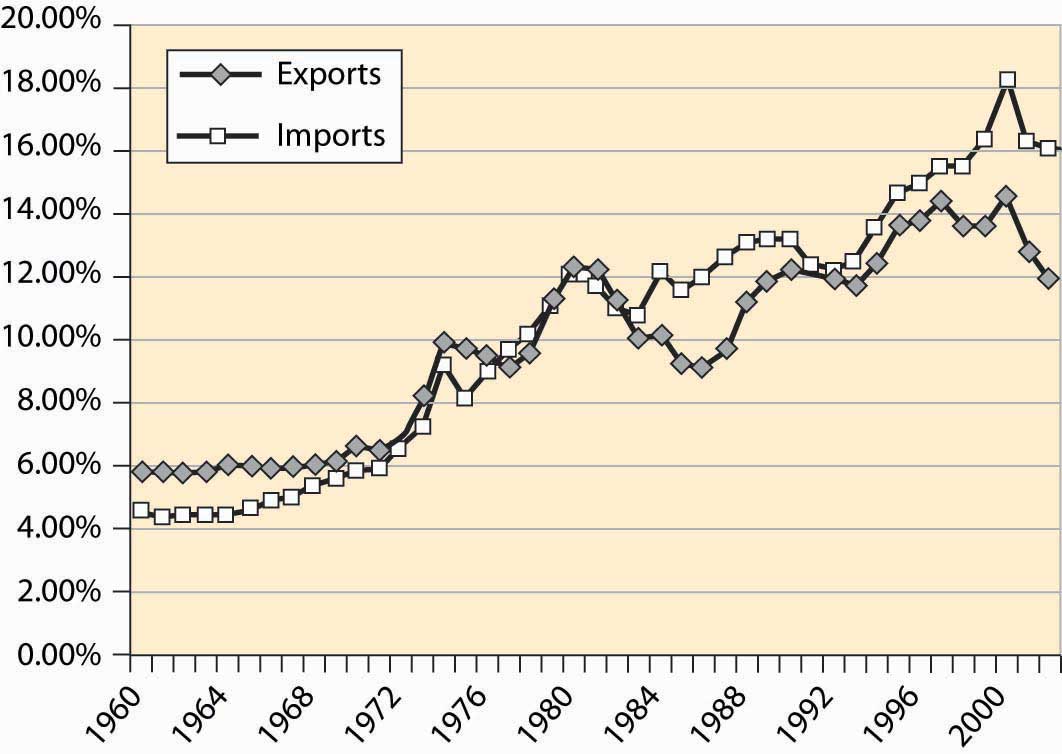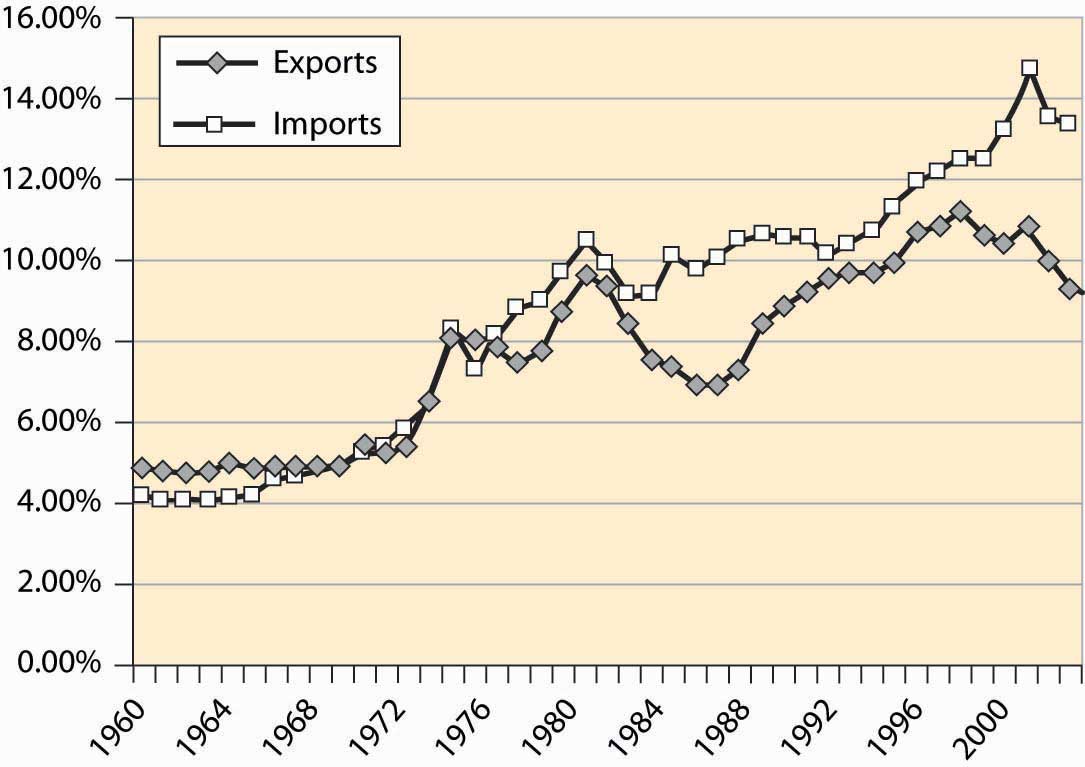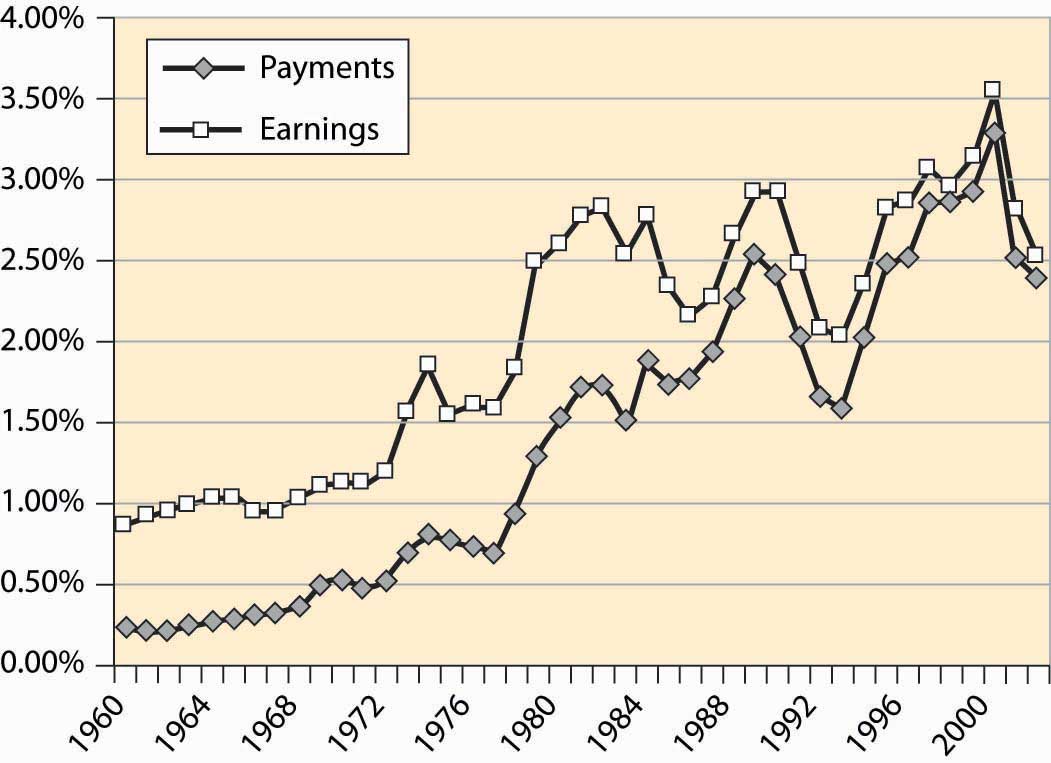4.6: Trade
- Page ID
- 43764
\( \newcommand{\vecs}[1]{\overset { \scriptstyle \rightharpoonup} {\mathbf{#1}} } \) \( \newcommand{\vecd}[1]{\overset{-\!-\!\rightharpoonup}{\vphantom{a}\smash {#1}}} \)\(\newcommand{\id}{\mathrm{id}}\) \( \newcommand{\Span}{\mathrm{span}}\) \( \newcommand{\kernel}{\mathrm{null}\,}\) \( \newcommand{\range}{\mathrm{range}\,}\) \( \newcommand{\RealPart}{\mathrm{Re}}\) \( \newcommand{\ImaginaryPart}{\mathrm{Im}}\) \( \newcommand{\Argument}{\mathrm{Arg}}\) \( \newcommand{\norm}[1]{\| #1 \|}\) \( \newcommand{\inner}[2]{\langle #1, #2 \rangle}\) \( \newcommand{\Span}{\mathrm{span}}\) \(\newcommand{\id}{\mathrm{id}}\) \( \newcommand{\Span}{\mathrm{span}}\) \( \newcommand{\kernel}{\mathrm{null}\,}\) \( \newcommand{\range}{\mathrm{range}\,}\) \( \newcommand{\RealPart}{\mathrm{Re}}\) \( \newcommand{\ImaginaryPart}{\mathrm{Im}}\) \( \newcommand{\Argument}{\mathrm{Arg}}\) \( \newcommand{\norm}[1]{\| #1 \|}\) \( \newcommand{\inner}[2]{\langle #1, #2 \rangle}\) \( \newcommand{\Span}{\mathrm{span}}\)\(\newcommand{\AA}{\unicode[.8,0]{x212B}}\)


| Rank | Country | Exports Year-to-Date | Imports Year-to-Date | Total | Percent |
|---|---|---|---|---|---|
| All Countries | 533.6 | 946.6 | 1,480.2 | 100.0% | |
| Top 15 Countries | 400.7 | 715.4 | 1,116.2 | 75.4% | |
| 1 | Canada | 123.1 | 167.8 | 290.9 | 19.7% |
| 2 | Mexico | 71.8 | 101.3 | 173.1 | 11.7% |
| 3 | China | 22.7 | 121.5 | 144.2 | 9.7% |
| 4 | Japan | 36.0 | 85.1 | 121.0 | 8.2% |
| 5 | Germany | 20.4 | 50.3 | 70.8 | 4.8% |
| 6 | United Kingdom | 23.9 | 30.3 | 54.2 | 3.7% |
| 7 | Korea, South | 17.5 | 29.6 | 47.1 | 3.2% |
| 8 | Taiwan | 14.0 | 22.6 | 36.5 | 2.5% |
| 9 | France | 13.4 | 20.0 | 33.4 | 2.3% |
| 10 | Italy | 6.9 | 18.6 | 25.5 | 1.7% |
| 11 | Malaysia | 7.2 | 18.0 | 25.2 | 1.7% |
| 12 | Ireland | 5.2 | 19.3 | 24.5 | 1.7% |
| 13 | Singapore | 13.6 | 10.1 | 23.7 | 1.6% |
| 14 | Netherlands | 15.7 | 7.9 | 23.6 | 1.6% |
| 15 | Brazil | 9.3 | 13.2 | 22.5 | 1.5% |



